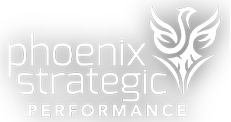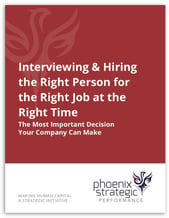Managing risk is a fact of business in the 21st century. Managing risk in the Information Technology world is factored into every decision we make. The question for the IT professional: Are you managing all your risks? "Sure," you answer, "I have high availability systems, I do incremental and full backups, I keep my security measures current, and I have a disaster recovery plan that I exercise annually." There is another dimension to the risk equation - the human assets that keep the IT world running. Let’s look at some of these...
Are Your Systems Supported?
When we look at the various software applications used in business today, one of the critical factors we assess is the software version we’re using. Are we on the current release? One, two, or more versions behind? Cloud-based applications have somewhat mitigated this issue and made going to and staying on the current release slightly less painful. Have you taken a step back and looked at the people supporting those systems? Are they “current”? It’s just as critical to keep your staff and human assets as current in technology as your software assets. We tend to hire people for today - with a skill set that satisfies a need at this moment in time. We are not always focused on developing those skills to keep pace with the organization's changing needs. Many leaders expect employees to work to become knowledgeable and current. While some may, others won't. Either way, self-governed development does not ensure that the skills the organization needs will be available on demand. Just as we ensure our applications and systems are on the current version, we need to ensure the people supporting them maintain the current competencies required for optimal performance and growth.
Future Proof Defined
The Cambridge English Dictionary defines Future Proof as “to design software, a computer, etc., so it can be used in the future, even when technology changes.” We’ve seen that it isn't easy to prove hardware in the future. The fact that we always have new versions of software coming out demonstrates the effort it takes to keep that software current. Your support staff is no different – what efforts are you taking to future-proof your staff? Are you developing plans to ensure they are as current as your applications?
Here are a few key initiatives to keep your staff current:
- Work with each staff member to create an individual development plan: Ensure the plan encompasses technical and non-technical items. The goal is to increase the value the team members can provide to the organization. Don’t restrict this to your technical staff; include your management staff.
- Ensure you and your staff commit to the development plan: As a leader, that is a vital part of your role. If you do not emphasize employee development, no one else will.
- Mentor your staff: Either you or your first-level managers should do this. Learn your staff's long-range objectives and help them achieve them. If they want to be a top developer, help them achieve that. Help them develop the necessary skills to transition to a management role. Follow up with the mentors and the mentees to ensure both are working to achieve results.
Remember, these actions don’t ‘just happen’ without effort, monitoring, and leadership focus.
Continuity of Operations
We have many options to ensure our system are available to meet the needs of the business: high availability configurations, cloud-based systems, numerous backup configurations, and alternative sites for failover to name a few. We employ a combination to ensure the maximum uptime to the customer. Are we ensuring the same level of availability for our staff?
Step back and look at how your staff is allocated to supporting critical software and/or projects. Are you creating an environment where your human assets have no back-up? It's not unusual to find IT organizations where the majority of knowledge about a particular system or critical component of that system resides with one person. Typically, the individual does not complain, after all, being the only one with the knowledge yields a sense of security, maybe even power. This single point of knowledge can cause stress among other team members since they are left to solve issues that occur when the primary individual is away from the office. IT leadership must commit to cross-training team members to ensure the availability of skilled resources to support ongoing operations – operationally-relevant skills bench strength. Consider establishing teams to support specific applications or projects. The vision here is to have the same level of backup in the support roles as in the systems themselves.
Continuity of People / Knowledge
Scenario 1: We need to assess where individuals are in their careers and the impact that can have. This can surface in several scenarios. There can be situations where team members have reached a point where they want to assume additional responsibility - either technically or beginning a transition to a management role, but a progression path does not exist within the organization. If the desire to progress is strong enough, they will eventually leave the organization to achieve their personal goals. There can be significant knowledge that leaves with that individual, even with cross training other team members. To be proficient, the cross training must include both knowledge transfer and the opportunity to apply the new skills so a high level of confidence is developed in the individual as well as the team.
Scenario 2: The second situation can occur when tenured team members approach retirement. These individuals typically have been with an organization for a significant period of time and possess a great amount of knowledge. This knowledge often includes the historical background leading to the current state. Assess this situation every six months. Work to develop a transition plan that includes both knowledge transfer and documentation development. Ensure that the departing individual transfers the knowledge to others and works with them so they are confident when assuming those new duties. Don't forget to look at the relationship network that individual had among his or her peers. Understand that you may have an entire support system that operates off those relationships. You will need to plan for that relationship transfer, too.
Scenario 3: The third example tends to occur in mature organizations that still rely on legacy systems. These organizations can present a challenge when working to hire less-experienced employees or recent graduates. These individuals may not have knowledge of the legacy systems - either hardware or software. It’s critical that the new members of the team have significant time invested in them to teach the skills they need and make them feel comfortable in the environment. As a leader, you must be willing to spend the time with them and explain the realities that not all businesses operate on the "latest and greatest" systems. Also, help them understand the benefits they receive by learning about legacy systems to expand their knowledge base, problem-solving skills, and the opportunity to participate in upgrades. Again, the team concept can help the new team members learn how to support the legacy systems.
Risk Reality is Everywhere
Risk exists both in our hardware and application environment and with our staff. We readily assess and work to mitigate the risks with our systems. We need to develop a strategy for our human capital management that parallels what we have created for our other systems. We can mitigate the risks through effective cross-training and developing support teams. In my earlier blog, "Does Your Organization See IT as a Good Investment," I discussed building your bench for technical and management resources. That concept applies here, too. The critical first step is assessing your specific situation. Follow that up with a planning session to develop a plan to mitigate the risks. Risks are everywhere today. Never underestimate the importance of human capital risks that may be inherent in your current operating environment.
We invite you to download our latest "Human Asset Management Strategy" Checklist, highlighting the criteria needed to evaluate your organization's human asset management strategy. You can also schedule a complimentary assessment with a member of our team.
Guest Blog Contributor:

Wayne Haggstrom has more than 30 years experience in technology planning and program management for organizations ranging from the Department of Defense and Fortune 100 companies to privately-held corporations. He has worked with organizations to establish the value of their technology initiatives, strategic direction, executive leadership development, waste reduction, process improvement and project management. Wayne works with IT organizations to help them establish a more business centric approach and demonstrate their value to the C-suite.
Wayne has a Masters in Information Systems Management from Webster University and a BS in Civil Engineering from The Ohio State University. He is a certified Project Management Professional, Certified Six Sigma Black Belt through Johnson Controls, a Certified Quality Facilitator and Lean/Cycle Time Reduction through The Total Quality Institute. He is also a Certified Sustainable Building Advisor. He has been an instructor for Management and Executive Leadership Development as well as Sustainable Building Concepts and Methods. He is a Senior member of the American Society for Quality and a member of the Project Management Institute.






